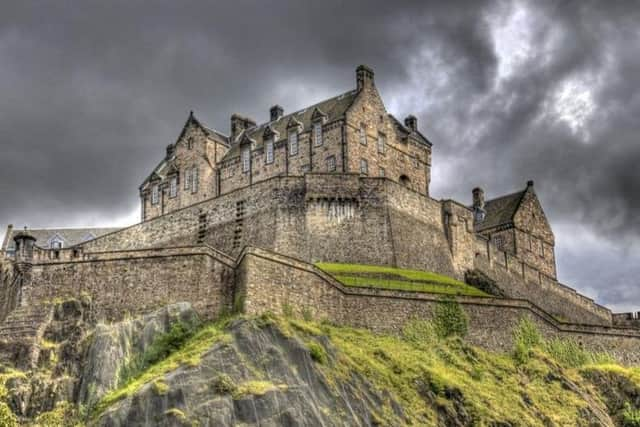Edinburgh's scariest haunts revealed in ghost map of Scotland
and live on Freeview channel 276
The Capital has its fair share of ghoulish goings-on with its landscape of graveyards, historic castles, closes and wynds and now, thanks to a map created by VisitScotland, ghost-hunters can follow their trails.
A headless drummer that haunts Edinburgh Castle, a poltergeist in Greyfriars Kirkyard and a paranormal pooch in Midlothian are some of the spooks featured in the drive to position Scotland as “the home of Hallowe’en”.


Advertisement
Hide AdAdvertisement
Hide AdThe Black Masoleum in Greyfriars Kirkyard is said to be haunted by a malevolent spirit thought to be Sir George Mackenzie, a 17th century Lord Advocate who led the persecution of the Covenanters.
The ghostly drumming of a headless musician heard on the ramparts of Edinburgh Castle is said to foretell impending disaster since first appearing in 1650.
The woods around Rosslyn Castle have been known to ring with the blood-curdling howls of a long-dead “war hound” slain at the Battle of Roslin in 1303. Legend has it that after the battle, the apparition was seen by soldiers and the man who killed the dog’s owner died of terror within days.
VisitScotland hopes spectre chasers will flock to Culzean Castle, in Ayrshire, in search of a piper who was sent into local caves to prove they were not haunted but was never seen again, and Crathes Castle, in Aberdeenshire, which is said to be haunted by the “green lady”, a servant who fell pregnant out of wedlock.
Advertisement
Hide AdAdvertisement
Hide AdThe A75 road between Stranraer and Gretna in Dumfries and Galloway is being promoted as Scotland’s most haunted road, thanks to sightings of everything from screaming hags to ghostly horse and carriages.
Other haunted highlights include St Andrews Cathedral, which is said to be home to the ghost of a friendly monk, Moray, in Speyside, where the ghostly apparition of a train on the site of a long-gone line is said to date back to an incident in which a service filled with cattle caught fire – killing all on board.
Sandwood Bay, at Kinlochbervie, in Sutherland, is reputed to be haunted by the ghosts of doomed sailors, who were shipwrecked long before a lighthouse was built at Cape Wrath in 1828.
VisitScotland’s website highlights that Hallowe’en’s origins are thought to date back to the ancient Celtic festival of Samhuinn, which is still marked in Edinburgh, which is being relocated from the Royal Mile to Calton Hill this year due to its growing popularity. It points out that Robert Burns’ 1785 poem Hallowe’en details many of the customs and legends of the celebrations.
Advertisement
Hide AdAdvertisement
Hide AdChief executive Malcolm Roughead said: “Scotland is the place to be at Hallowe’en with our atmospheric landscape, creepy castles, haunted historic houses, superstitions and bloody history.
“This time of year brings a huge tourism potential. But ghosts are not just for Hallowe’en – spirits are said to haunt these locations year-round so it is important for us to extend these festivities from one night only and capitalise on the public’s fascination with things that go bump in the night.”